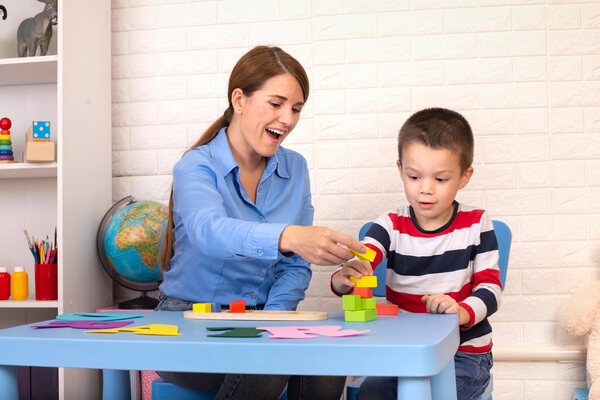A Parent’s Guide to Incorporating and Educating Fire Safety
As a parent, it’s natural to want to protect your family from experiencing a devastating fire incident. One way you can achieve this is by incorporating fire safety into your daily routine and educating your children on how to prevent and respond to this disaster.
Respect for fire is key to helping the prevention of fires, as well as surviving it. In this guide, we’ll discuss the steps you can take to make your home secure and how to teach your kids about common household hazards.
The Importance of Teaching Fire Safety to Children
Each year, more than 26% of fires are reported in homes across the United States. Children are naturally curious, which can lead them to explore their surroundings, including fire hazards. While you may not always be able to control every factor that could cause an accident in your home, you can educate your children on how to prevent and respond to these disasters.
Teaching your kids about fire safety can help them develop life-long skills they can carry into adulthood. Not only will they know how to react in the event of a fire, but they’ll also understand how to prevent them from occurring in the first place.
Preparing Your Family for Home Fire Prevention
Fire safety education is a multi-faceted approach that involves prevention, escape planning, and recovery. Here are the key steps to prepare your family:
- Preventing home fires: Start by explaining to your kids the common causes, such as unattended stoves, faulty electrical appliances, and flammable materials. Encourage them to be vigilant, like turning off appliances when not in use or before leaving the house.
- Escape plans: It’s also crucial to have a well-thought-out escape plan in case of an emergency. Make sure your children understand how to exit the house immediately and know where the designated meeting point is. Be sure to practice fire drills to reinforce this knowledge regularly.
- Recovery after a fire: In the unfortunate event of a catastrophe, teach your kids how to react. You can do this by stressing the importance of calling 911 immediately and how to provide their location accurately.
Keeping your family secure is a continuous process, and fireproofing education must be an ongoing conversation.
Common Places Where Fires Occur
Fires can erupt unexpectedly in various parts of a home, posing a significant threat to your family’s well-being. Understanding the most common places where these incidents occur is essential. Here’s a closer look at these potential hazardous zones:
Kitchen
The kitchen is often considered the heart of a home, but it’s also the leading location for home fires. Unattended stoves, overheated appliances, and cooking oils can lead to kitchen flames. So, teach your family about kitchen safety, emphasizing the importance of staying attentive while cooking and keeping flammable objects away from all contributing to electrical bursts. Be sure to adequately supervise your kids while cooking.
Bedrooms
Bedrooms are filled with potential fire hazards, including electrical devices, heaters, and overloaded extension cords. This is why there must be safety practices in the bedrooms, such as not leaving devices plugged in overnight and using space heaters responsibly.
Living Room
The living room is another area where flames can start due to electrical appliances and heating sources. Teach your children the importance of proper usage and maintenance of items like space heaters, televisions, and gaming consoles.
Garages
Garages pose unique fire risks because they often store flammable materials, such as gasoline, propane, paints, and chemicals. These substances can ignite and cause a rapid and dangerous blaze. To keep your garage secure:
- Ensure that flammable materials are stored in well-ventilated areas away from heat sources. You should also lock these substances out of reach of children.
- Your family should also understand the proper handling of tools and equipment. Improper use of power tools or careless disposal of cigarettes can also spark a fire in the garage.
By being aware of these common fire-prone areas, you can take proactive steps to reduce the risk and keep your family secure. Understanding the unique challenges of your home safety measures can go a long way in stopping fires in these spaces.
Fire Prevention Tips for Children

Sharing fire prevention with children should be informative, but it doesn’t need to be tedious. Here are some ways to share fire hazard tips:
- Explain the different types of burns and their severity. Explain how to cool them with cold water and when it’s essential to seek medical help for more severe burns.
- Introduce your kids to smart technology that can enhance fireproofing, such as smoke detectors and outlets that allow the user to control the device remotely and can even alert you of any dangers when you’re not home.
- Use the stop-drop-and-roll technique to show your family how to act if their clothes catch on fire. Have them practice it until they can do so without hesitation.
- Make learning enjoyable by incorporating games and quizzes. This interactive approach can help your kids retain the information and apply it when needed.
Although fire safety can be a serious topic, it’s essential to make it engaging for children. This will help them understand and remember the information better, making it more likely for them to apply it in real-life situations.
About the Author
 Katie Brenneman is a passionate writer specializing in education, mental health, family lifestyle and online safety. When she isn’t writing, you can find her with her nose buried in a book or hiking with her dog, Charlie. You can follow her on Twitter.
Katie Brenneman is a passionate writer specializing in education, mental health, family lifestyle and online safety. When she isn’t writing, you can find her with her nose buried in a book or hiking with her dog, Charlie. You can follow her on Twitter.







 Again, whether you’re a teacher or a parent, you understand how important preschool is. It’s a critical stage for acquiring language development, problem-solving, emotional regulation, and other fundamental skills. The problem is that with ADHD, these developmental milestones may become more challenging to achieve. What can you do if that’s the case? Utilize tools that can assist children as they develop during their preschool years, like the
Again, whether you’re a teacher or a parent, you understand how important preschool is. It’s a critical stage for acquiring language development, problem-solving, emotional regulation, and other fundamental skills. The problem is that with ADHD, these developmental milestones may become more challenging to achieve. What can you do if that’s the case? Utilize tools that can assist children as they develop during their preschool years, like the 



